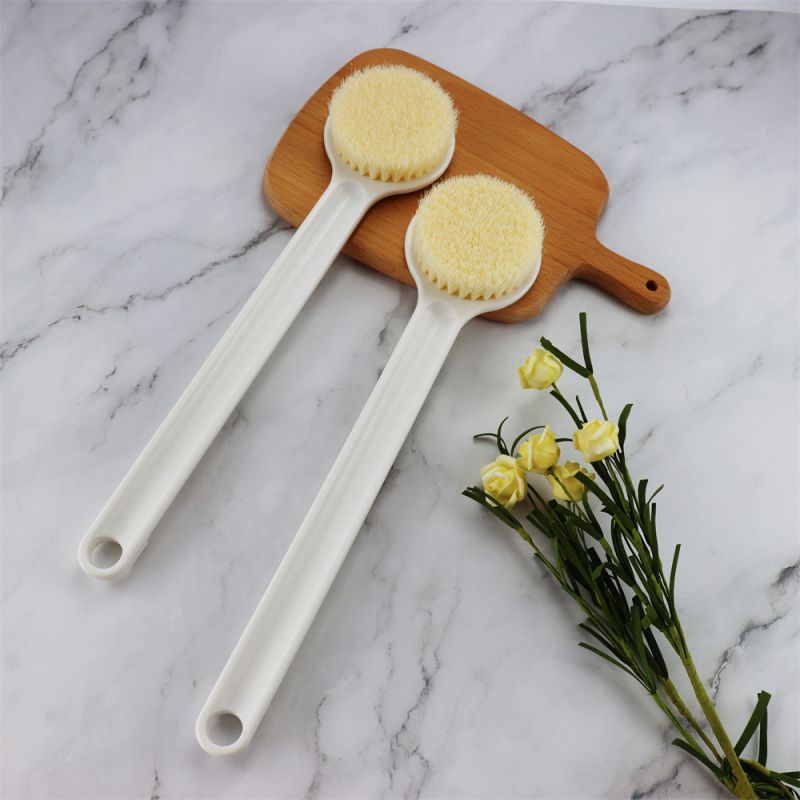The plastic body brush, due to its portability and durability, has become a common tool for home body care. Only by mastering the correct usage method can one remove dead skin cells without damaging the skin and achieve the best care effect.

Before use, basic preparations should be made. Choose a brush head with a diameter of 8 to 10 cm and a handle length of 25 cm, which is convenient for cleaning hard-to-reach areas such as the back. Before use, check if the bristles are firmly attached to avoid loose or fallen bristles that may scratch the skin. It is recommended to use it during a shower. First, moisten the body with warm water at 38-40℃ for 3 minutes to soften the dead skin cells. This will enhance the cleaning effect and reduce irritation to the skin.
Different parts of the body require different usage methods. When cleaning areas with thick dead skin cells such as the limbs, hold the brush head at a 30° angle to the skin and gently rub in a circular motion. The force should be such that the skin turns slightly red but without a stinging sensation. Repeat this process 5 to 8 times in each area. When cleaning sensitive areas such as the abdomen and chest, turn the brush head over so that the surface is soft bristles. Tap rather than rub to avoid excessive exfoliation that may cause sensitivity.
Special groups have more detailed precautions. People with sensitive skin should choose a fine bristle brush head with a mesh count of over 600 and use it no more than once a week, avoiding areas with eczema, acne, or broken skin. When pregnant women clean, they need help from their family. They should avoid bending over to use the brush. The pressure on the brush head should be controlled within 50g to prevent pressure on the abdomen. Children's skin is delicate. It is not recommended to use plastic body brushes. If cleaning is needed, a soft bath sponge can be used as an alternative.
Post-use cleaning and maintenance should not be ignored. After each use, rinse the brush head under running water to remove any remaining skin flakes and body wash, then place it upside down to dry to prevent bacteria from growing in a damp environment. Soak the brush head in neutral detergent for 10 minutes once a month to thoroughly clean the dirt in the gaps and extend its service life. If the bristles are deformed, fall out, or the brush head cracks, replace it in time. Generally, the service life of a plastic body brush is 3 to 6 months.
Only by following these precautions can the plastic body brush become a good helper for skin care, cleaning while protecting skin health.